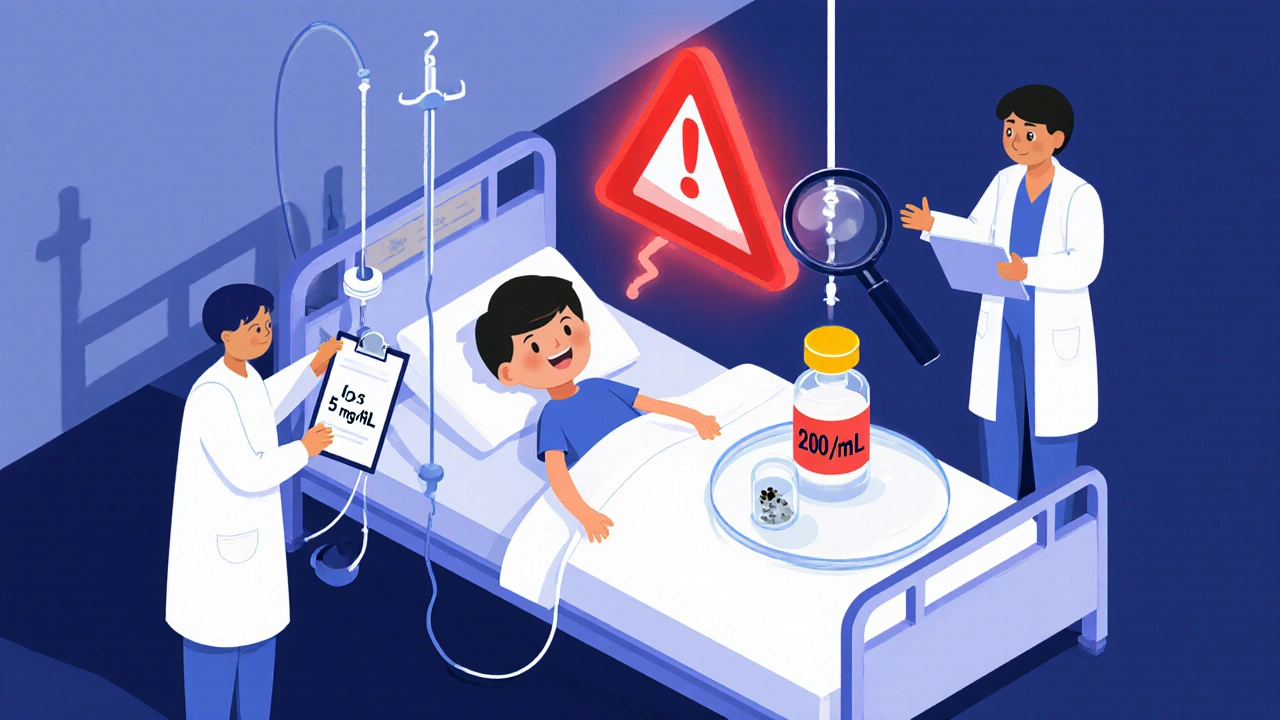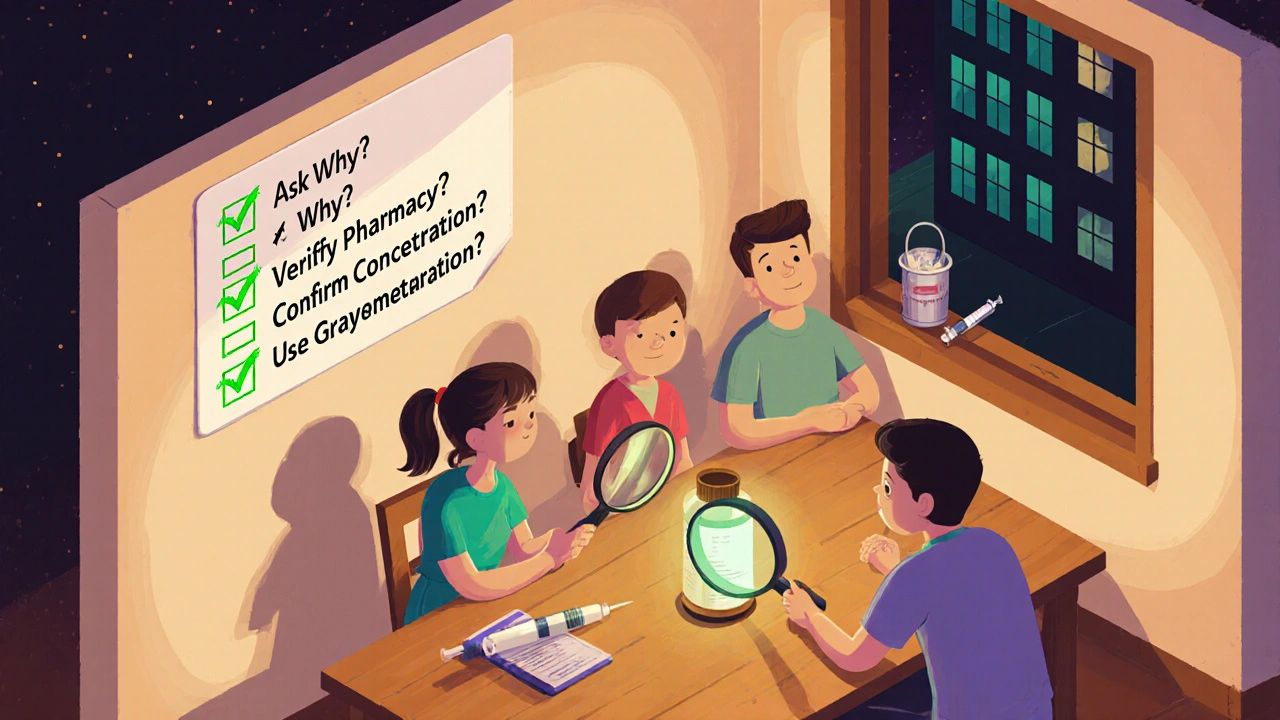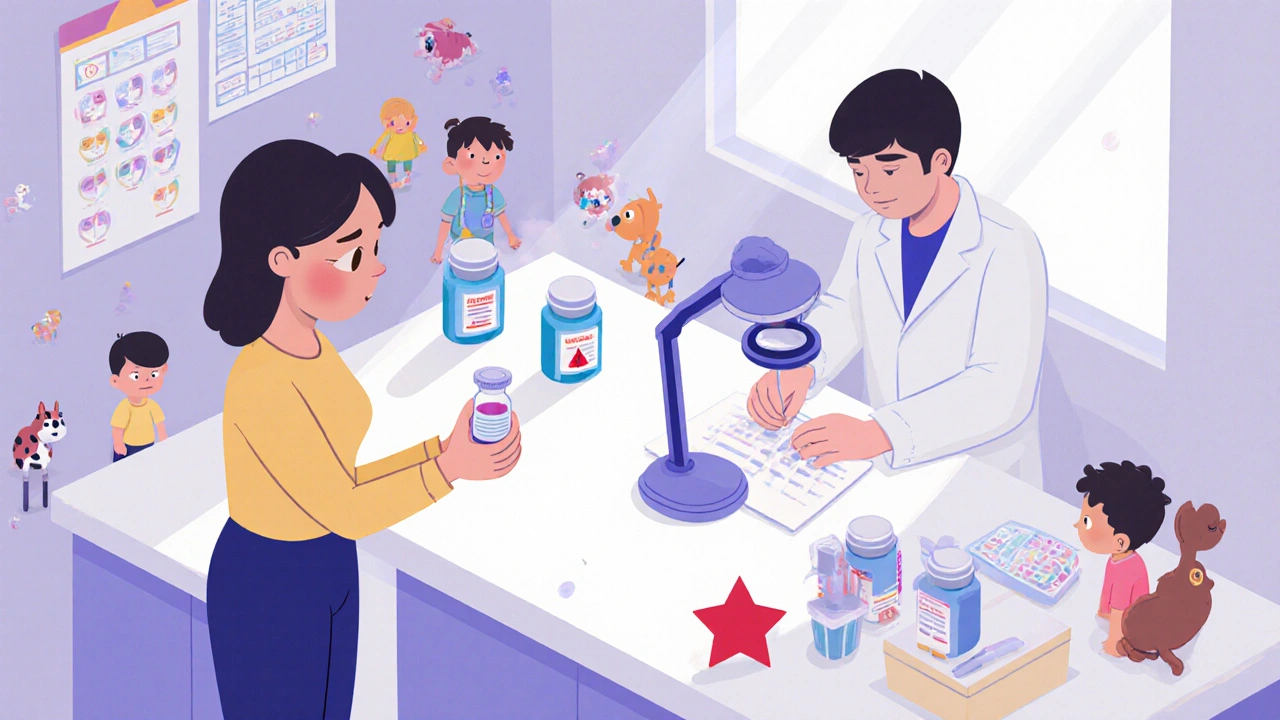When your child needs a medicine that isn’t available in a store-bought form, compounded medications can feel like a lifeline. Maybe they can’t swallow pills. Maybe they’re allergic to dyes or preservatives. Or maybe they need a tiny dose that only a pharmacist can prepare precisely. But here’s the truth most parents don’t hear: compounded medications for children come with serious risks - and using them safely isn’t just about following instructions. It’s about asking the right questions, knowing what to look for, and understanding how little oversight exists.
What Exactly Is a Compounded Medication?
A compounded medication is custom-made by a pharmacist to fit a specific patient’s needs. Unlike regular drugs made by big pharmaceutical companies and approved by the FDA, compounded drugs aren’t tested for safety, strength, or purity before they’re given to kids. They’re mixed by hand - sometimes in small pharmacies, sometimes in labs - using raw ingredients. That means no guarantee the pill has the right amount of medicine. No guarantee it’s clean. No guarantee it won’t cause harm.
For children, this is especially dangerous. A child’s body is tiny. A dose that’s safe for an adult could be deadly for a toddler. A little too much morphine. A little too little thyroid medicine. A drop of the wrong liquid. These aren’t hypotheticals. They’ve led to hospitalizations. They’ve led to deaths.
When Is Compounding Actually Necessary?
Compounding isn’t meant to replace FDA-approved drugs. It’s meant for situations where no approved option exists. For example:
- A child with a severe allergy needs a version of a drug without red dye or gluten
- A baby in the NICU needs a sterile, preservative-free version of fentanyl because benzyl alcohol can damage their developing organs
- A child with swallowing difficulties needs a flavored liquid version of a medicine only sold as a tablet
- A diabetic child needs sugar-free insulin or other medications
If there’s an FDA-approved version - even if it’s expensive or hard to find - that’s the safer choice. The FDA warns: unnecessary use of compounded drugs may expose patients to potentially serious health risks. Too often, parents are told compounding is the only option when it’s not. Always ask: Is there an approved version?
The Hidden Dangers in Pediatric Compounding
Here’s what you won’t see on the label:
- Dosing errors: A 2022 study found that 14-31% of pediatric medication errors involve compounded drugs. One parent reported their 8-year-old ended up in the ER because the compounded levothyroxine was 40% weaker than prescribed. Another child received 20 times the intended dose of semaglutide - a drug meant for adults - and nearly died.
- Contamination: In 2012, a fungal meningitis outbreak killed 64 people and sickened nearly 800 after contaminated compounded spinal injections were given. The source? A single pharmacy. That’s not ancient history - it’s a warning.
- Inconsistent strength: A compounder might mean to make 5 mg/mL, but accidentally make 10 mg/mL. Or 2 mg/mL. Without lab testing, you’ll never know. For a child, that’s a life-or-death difference.
- Wrong ingredients: Some compounding pharmacies use low-quality or unverified raw materials. There’s no mandatory testing. No recall system. No public alert if something goes wrong.
The Emily Jerry Foundation was created after a 2-year-old died from a compounding error during chemotherapy. The technology to prevent it - gravimetric analysis - was already available. But most pharmacies don’t use it. Why? It costs money. It takes time. And no one is forcing them to.

How to Protect Your Child: A Step-by-Step Safety Plan
If your doctor says your child needs a compounded medication, don’t accept it without these steps:
- Ask why. Demand a clear reason: Why can’t we use the FDA-approved version? If the answer is “it’s easier” or “it’s cheaper,” walk away.
- Verify the pharmacy. Only use a pharmacy accredited by the Pharmacy Compounding Accreditation Board (PCAB) or the National Association of Boards of Pharmacy (NABP). Look for their logo on the website or packaging. Only about 1,400 of the 7,200 compounding pharmacies in the U.S. have this accreditation.
- Get the exact concentration. Always ask: What’s the strength? How many milligrams per milliliter? Write it down. A common error is confusing mg/mL with mg/tsp. One parent gave their child a teaspoon of a liquid meant to be 1 mg/mL - but it was actually 5 mg/mL. The child went into cardiac arrest.
- Double-check with both doctor and pharmacist. Call the prescribing doctor and the pharmacist separately. Confirm the dose, the frequency, and the form. 68% of pediatric compounding errors come from miscommunication between providers.
- Ask about safety practices. Does the pharmacy use gravimetric analysis? That’s a scale that measures weight precisely during mixing - the gold standard. Less than 8% of U.S. hospitals use it. But if they don’t, ask why. And if they say, “We do it by eye,” don’t use their product.
- Store it correctly. Some compounded liquids need refrigeration. Others must be used within 7 days. Check the label. If it says “discard after 14 days,” but the pharmacy says “it’s fine for 30,” trust the label - not the person handing it to you.
- Watch for reactions. Vomiting, nausea, dizziness, fainting, or unusual fatigue after starting a compounded drug? Don’t assume it’s a virus. Call your doctor immediately. These are common signs of dosing errors.
What to Do If Something Goes Wrong
If your child has a bad reaction to a compounded medication:
- Stop the medication immediately
- Call your pediatrician or go to the ER
- Save the bottle, label, and any leftover medicine
- Report it to the FDA’s MedWatch program - even if you’re not sure it’s the drug’s fault
- Contact the Pharmacy Compounding Accreditation Board (PCAB) if the pharmacy is accredited
Every report matters. The FDA has documented over 900 adverse events linked to compounded semaglutide and tirzepatide - including 17 deaths - as of December 2024. Most were in adults, but children are at higher risk because their bodies can’t handle even small mistakes.

The Bigger Picture: Why This Is Still Happening
The compounded medication market grew to $11.3 billion in 2024. But only 8.2% of that is for children. And yet, children are the most vulnerable. Why? Because regulations are weak. The FDA can’t inspect every pharmacy. State boards are underfunded. Pharmacies take advantage of drug shortages to mass-produce compounded versions - even after the shortage is over.
Technology exists to prevent these errors. Gravimetric analysis reduces pediatric dosing errors by 75%. But it costs $25,000-$50,000 per station. Smaller pharmacies can’t afford it. And until lawmakers require it, they won’t.
Right now, 28 states are considering laws - called “Emily’s Law” - that would require gravimetric verification for all pediatric compounded sterile preparations. That’s progress. But it’s not enough. Parents still have to fight for safety.
Final Word: Trust, But Verify
Compounded medications can help children who have no other options. But they are not safe by default. They are risky by design. The system is built on trust - trust in the pharmacist, trust in the doctor, trust in the label. But trust without verification is dangerous.
Always ask. Always double-check. Always demand proof. Your child’s life depends on it.
Are compounded medications FDA-approved?
No. Compounded medications are not FDA-approved. This means the FDA does not test them for safety, effectiveness, or quality before they’re given to patients. Even if a pharmacy is licensed, the drug itself hasn’t gone through the same review process as store-bought medicines.
How do I know if my child’s pharmacy is safe?
Look for accreditation from the Pharmacy Compounding Accreditation Board (PCAB) or the National Association of Boards of Pharmacy (NABP). These are the only two organizations that verify a pharmacy meets strict safety standards. You can check their websites to search for accredited pharmacies. If the pharmacy doesn’t display this accreditation, ask why - and consider finding another one.
Can I trust the dosage instructions on the label?
Never assume the label is correct. Always confirm the concentration (e.g., 5 mg/mL) with both your child’s doctor and the pharmacist. Many errors happen because the label says “10 mg per teaspoon” but the actual liquid is 20 mg per teaspoon. Always write down the exact numbers and compare them.
What signs should I watch for after giving my child a compounded drug?
Watch for vomiting, nausea, abdominal pain, fainting, headaches, unusual tiredness, or sudden changes in behavior. These can be signs of too much or too little medicine. If your child develops any of these symptoms within hours or days of starting the medication, stop it and contact your doctor immediately.
Is there a safer alternative to compounded medications?
Yes - if one exists. Always ask your doctor: “Is there an FDA-approved version of this drug that works for my child?” Even if it’s more expensive or harder to find, it’s safer. For example, many liquid versions of antibiotics or thyroid medications are now available in child-friendly forms without needing compounding.
Why don’t all pharmacies use safer mixing methods like gravimetric analysis?
Gravimetric analysis - using precise scales to measure ingredients - reduces pediatric dosing errors by 75%. But it costs $25,000-$50,000 per station and requires additional training. Most small pharmacies can’t afford it, and there’s no federal law requiring it. Only a few states have passed laws to make it mandatory for pediatric compounds.
What should I do if I suspect a compounding error?
Stop giving the medication. Call your doctor or go to the ER. Save the bottle and any remaining medicine. Report the incident to the FDA’s MedWatch program at fda.gov/medwatch. You can also contact the pharmacy’s accrediting body (PCAB or NABP) if they’re accredited. Your report could help prevent another child’s injury.
